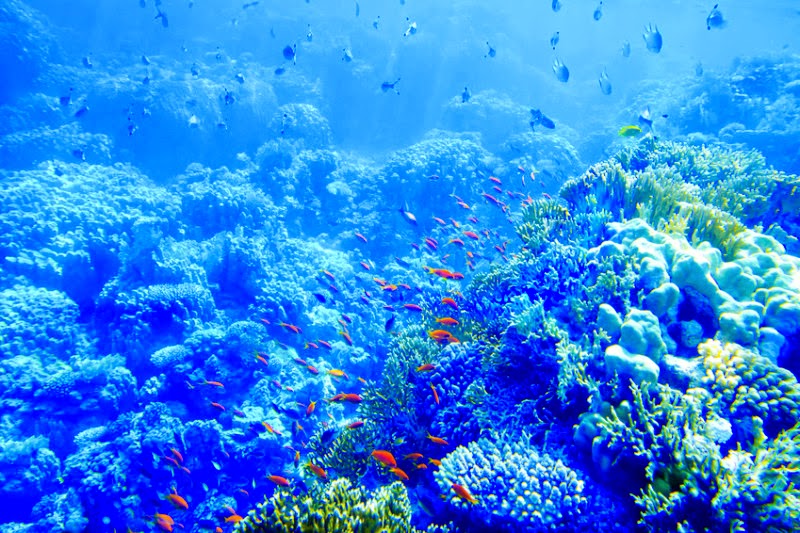From coral reefs to prairie grasslands, some of the world's most iconic
habitats are susceptible to sudden collapse due to seemingly minor
events. A classic example: the decimation of kelp forests when a decline
of otter predation unleashes urchin population explosions. Three
studies published in the Nov. 24 special issue of Philosophical Transactions of the Royal Society Biological Science
hold the promise of helping resource managers predict, avoid, and
reverse the tipping points that lead to degraded habitats, economic
losses, and social upheaval.
The studies are the initial findings of the Ocean Tipping Points Project, an international research collaboration.
"In a sea of tipping points, identifying, anticipating, and reacting to sudden ecosystem changes will be critical as we seek to maintain the delivery of the goods and services from our oceans," says co-author Phil Levin, a fisheries biologist at the National Oceanic and Atmospheric Administration (NOAA).
In the first study, scientists from the Center for Ocean Solutions at Stanford University and the Environmental Defense Fund evaluated 51 case studies around the globe. They found that successful management of systems with known tipping points depends strongly on three factors: consistent monitoring, explicit incorporation of tipping points data into management actions, and management at small geographic scales. The authors conclude that areas of approximately 6,500 mi2 (17,000 km2, roughly twice the area of Yellowstone National Park) or less are easier to understand, monitor, and manage at the local scale.
"Managers who use tipping points science are achieving positive results for virtually every kind of ecosystem," said co- author Ashley Erickson, policy and education manager with the Center for Ocean Solutions at Stanford. "The findings of our study can help resource managers focus and prioritize their efforts."
The second study, authored by researchers from NOAA and the University of Hamburg, provides additional guidance for marine managers on how to incorporate the risk of reaching a tipping point into current ecosystem-based management frameworks. The authors demonstrate how to adapt NOAA's widely used Integrated Ecosystem Assessment (IEA) framework for marine ecosystems where tipping points are a concern. This risk-analysis based approach helps managers determine the likelihood that an ecosystem will cross a threshold, and what the resulting socio-economic and environmental impacts might be.
In the third study, researchers from the Center for Ocean Solutions, Stockholm Resilience Centre, University ofai`i, NOAA, and the Scripps Institute of Oceanography used a comprehensive global dataset to identify three distinct and stable regimes of Hawaiian Archipelago reef ecosystems: hard corals, turf algae, or macroalgae. Though some algal cover is natural, algae-dominated reefs are the degraded remains of once-diverse coral communities. More than half of Hawaii's reefs are currently in the algae-dominated regime, thanks to overfishing and nutrient pollution.
"To safeguard Hawaii's coral reefs, we need to increase herbivore populations and decrease other human stressors, such as land run-off, that encourage the growth of algae," states lead author Jean-Baptiste Jouffray of the Stockholm Resilience Centre. "By quantifying tipping points this study offers tangible targets for just how much those stressors need to be reduced to avoid regime shifts in healthy reefs and restore those already in decline. For managers working with limited funds and resources, this is critical information."
"In a sea of tipping points, identifying, anticipating, and reacting to sudden ecosystem changes will be critical as we seek to maintain the delivery of the goods and services from our oceans," says co-author Phil Levin, a fisheries biologist at the National Oceanic and Atmospheric Administration (NOAA).
In the first study, scientists from the Center for Ocean Solutions at Stanford University and the Environmental Defense Fund evaluated 51 case studies around the globe. They found that successful management of systems with known tipping points depends strongly on three factors: consistent monitoring, explicit incorporation of tipping points data into management actions, and management at small geographic scales. The authors conclude that areas of approximately 6,500 mi2 (17,000 km2, roughly twice the area of Yellowstone National Park) or less are easier to understand, monitor, and manage at the local scale.
"Managers who use tipping points science are achieving positive results for virtually every kind of ecosystem," said co- author Ashley Erickson, policy and education manager with the Center for Ocean Solutions at Stanford. "The findings of our study can help resource managers focus and prioritize their efforts."
The second study, authored by researchers from NOAA and the University of Hamburg, provides additional guidance for marine managers on how to incorporate the risk of reaching a tipping point into current ecosystem-based management frameworks. The authors demonstrate how to adapt NOAA's widely used Integrated Ecosystem Assessment (IEA) framework for marine ecosystems where tipping points are a concern. This risk-analysis based approach helps managers determine the likelihood that an ecosystem will cross a threshold, and what the resulting socio-economic and environmental impacts might be.
In the third study, researchers from the Center for Ocean Solutions, Stockholm Resilience Centre, University ofai`i, NOAA, and the Scripps Institute of Oceanography used a comprehensive global dataset to identify three distinct and stable regimes of Hawaiian Archipelago reef ecosystems: hard corals, turf algae, or macroalgae. Though some algal cover is natural, algae-dominated reefs are the degraded remains of once-diverse coral communities. More than half of Hawaii's reefs are currently in the algae-dominated regime, thanks to overfishing and nutrient pollution.
"To safeguard Hawaii's coral reefs, we need to increase herbivore populations and decrease other human stressors, such as land run-off, that encourage the growth of algae," states lead author Jean-Baptiste Jouffray of the Stockholm Resilience Centre. "By quantifying tipping points this study offers tangible targets for just how much those stressors need to be reduced to avoid regime shifts in healthy reefs and restore those already in decline. For managers working with limited funds and resources, this is critical information."

No comments:
Post a Comment